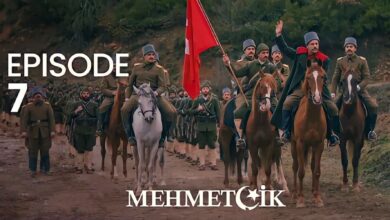Mehmetcik Kutul-Amare Season 1 Episode 6 With Urdu Subtitles by Jihad Play

Introduction
Mehmetçik Kut’ül-Amare, often simply referred to as the Siege of Kut, stands as a significant chapter in the history of World War I. This remarkable battle showcased the bravery and resilience of Ottoman forces, led by the indomitable commander Mustafa Kemal Atatürk, who would later become the founding father of modern Turkey. The Siege of Kut is not only a testament to the Ottoman Empire’s enduring spirit but also a critical event that left an indelible mark on the course of the war.
Player 1
Player 2
DOWNLOAD LINK :
Background
The Ottoman Empire’s involvement in World War I was a pivotal moment in its history. The empire was already grappling with internal strife and external pressures when it entered the war in 1914 on the side of the Central Powers, which included Germany and Austria-Hungary. The British Empire, along with its allies, sought to expand its influence in the Middle East and aimed to capture the strategically important city of Baghdad.
The Siege of Kut
In the autumn of 1915, British forces, under the command of General Charles Townshend, began their advance toward Baghdad. As part of their campaign, they laid siege to the town of Kut-al-Amara, situated on the Tigris River. The Ottoman defenders, led by the young officer Mustafa Kemal, were determined to resist fiercely.
The siege, which commenced on December 7, 1915, turned into a protracted and grueling affair. The Ottoman forces endured harsh conditions, facing shortages of food, ammunition, and medical supplies. Despite these hardships, they refused to surrender. Mustafa Kemal’s strategic acumen and leadership played a crucial role in sustaining the Ottoman defense.
The Turning Point
The prolonged siege began to take its toll on the Ottoman defenders, but hope was not lost. In a bold and daring move, Mustafa Kemal launched a surprise attack on the British lines in late April 1916. This maneuver temporarily lifted the siege, allowing for a critical resupply of the Ottoman forces. However, the relief was short-lived, as the British soon regrouped and resumed their siege.
The Final Surrender
As the siege continued, the Ottoman defenders faced starvation, disease, and mounting casualties. On April 29, 1916, Mustafa Kemal reluctantly ordered his troops to surrender. The Ottoman soldiers, who had fought valiantly for over 140 days, were taken as prisoners of war by the British.
Legacy
The Siege of Kut left an indelible mark on the collective memory of the Ottoman Empire and later Turkey. Mustafa Kemal Atatürk, who emerged as a hero from this battle, would go on to lead Turkey through a period of profound transformation, founding the modern Turkish Republic.
The Siege of Kut also served as a source of inspiration for the Turkish War of Independence, fought from 1919 to 1923, during which Atatürk led the nation to victory against foreign occupation and established the Republic of Turkey.
Conclusion
Mehmetçik Kut’ül-Amare is a symbol of the indomitable spirit and resilience of the Ottoman forces during World War I. The heroic defense of Kut, led by Mustafa Kemal Atatürk, is a testament to the determination and courage of those who fought against overwhelming odds. This historic battle not only contributed to shaping the course of World War I but also played a pivotal role in the emergence of modern Turkey and its enduring legacy.



